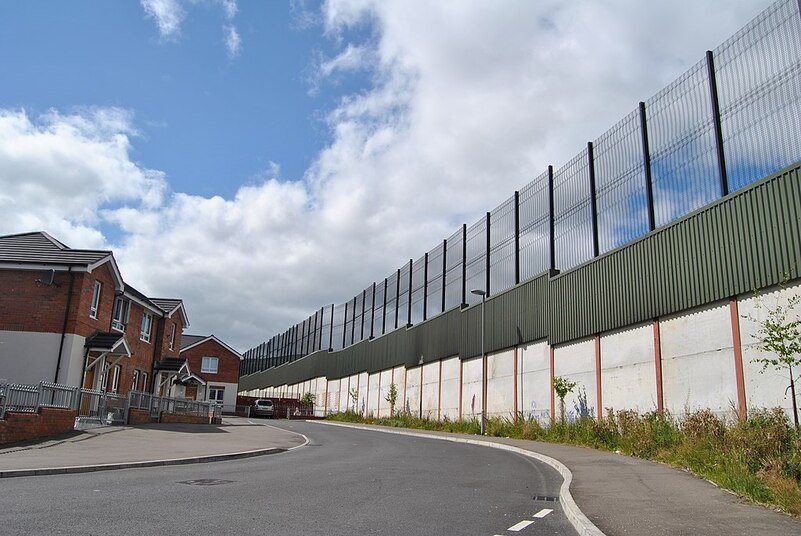Development
Heritage is also often lost or damaged in conflict as a consequence of development (both buildings and agricultural expansion). It’s important to note that the loss of heritage from illegal development is a common problem in peacetime. However, during conflict, the staff charged with protecting sites – whether heritage staff or law enforcement – are frequently unable to access sites to enforce protection. As a result, the destruction of sites to build new houses, or increase the size of fields can become a major problem, particularly at significant sites that may otherwise have been well protected. Whilst the new buildings can be removed, the demolition cannot be undone. Stone robbing is also a problem, as those in need of building materials take the cut stone from existing historic buildings. The rapid destruction of towns – whether from conflict or a natural disaster – also leads to rapid redevelopment, where the urgent need to provide shelter for those who live there, and to restart the economy, frequently overrides the need to take account of heritage, the recovery and rebuilding of which is very slow. The plans for the rebuilding of Beirut, for example, frequently failed to take account of the extensive archaeological layers revealed by the clearance of the rubble, so no money was allocated for their excavation or the storage of finds, and there was extensive loss. In addition, many historic buildings that could perhaps have been saved or rebuilt were cleared away, leading some to call contemporary Beirut’s centre “soulless”.
Architecture and development are also used to define and redefine conflict and post-conflict landscapes. Northern Ireland's city of Belfast, for example, saw thirty years of war from the 1960s to the 1990s, and became heavily militarised. Niall Patrick Walsh writes:
|
Belfast was carved into sections by Peace Walls designed to prevent clashes between pro-Irish Nationalist and pro-British Unionist communities. Many Peace Walls survive to this day, including the Shankill/Falls Wall, which has now existed for longer than the Berlin Wall did before its 1989 demolition. Barriers dominated the urban landscape, with a security "ring of steel" encircling the commercial core to facilitate checks and searches. The idea of a connected, flowing urban fabric was alien to the Belfast of the late twentieth century.
|
Residential areas were separated by roads and new estates to break up community tensions, and new housing estates focussed on safety and security. Research by Coyles, Hamber, & Grant has also identified "hidden boundaries" that remain to this day:
1) Everyday elements of the built environment recognised at local level as defining the inter-community boundary;
2) Streets which residents will not travel on as they are perceived to belong to another community and not considered safe to use; and
3) Bus routes that are not used as they are perceived to belong to another community and not considered safe to use.
2) Streets which residents will not travel on as they are perceived to belong to another community and not considered safe to use; and
3) Bus routes that are not used as they are perceived to belong to another community and not considered safe to use.
Mitigation: As far as possible, site guards and those responsible for enforcing heritage laws should be supported to continue their work to protect sites and, when the situation permits, national prosecutions should be carried out to punish those who demolished historic areas, acting as a deterrent to future illegal development in the post-conflict period. In addition, those dealing with heritage reconstruction should contact those who deal with larger-scale rebuilding of infrastructure, to raise the importance of heritage in post-conflict rebuilding, both in terms of funding requirements and potential to contribute to community rebuilding. This work will benefit considerably from accurate plans of the location of heritage sites, completed (as far as possible) during peacetime.
Dealing with the architectural legacy of conflict remains a key issue for communities. Since the 1990s in Belfast, an architecture of hope and defiance has emerged in the new monuments built, and although many of the visible and hidden barriers of the era remain, work with local communities is ongoing to return the built environment to one focussed on peace.
|
Titanic Exhibition Centre, Belfast by Kenneth Ince, CC BY-SA 2.0 via Wikimedia Commons
The Titanic Centre was completed in 2012 by TODD Architects, commemorating the ill-fated ship built at Belfast’s shipyards. The surrounding area, called the Titanic Quarter, is undergoing a £7 billion LEED Gold-awarded regeneration project, creating a 185 acre series of urban villages linked by open, green, public space. |
N.P. Walsh - How Architecture Tells the Story of Conflict and Peace in Northern Ireland. Arch Daily
D. Coyles, B. Hamber, A. Grant - Hidden Barriers And Divisive Architecture: The Case Of Belfast
See more information about the rebuilding of downtown Beirut on the Aleppo Project's website (including the comment at the bottom).
See examples of the development during conflict in this satellite imagery analysis of damage to sites in Syria during the conflict by UNOSAT.
D. Coyles, B. Hamber, A. Grant - Hidden Barriers And Divisive Architecture: The Case Of Belfast
See more information about the rebuilding of downtown Beirut on the Aleppo Project's website (including the comment at the bottom).
See examples of the development during conflict in this satellite imagery analysis of damage to sites in Syria during the conflict by UNOSAT.

